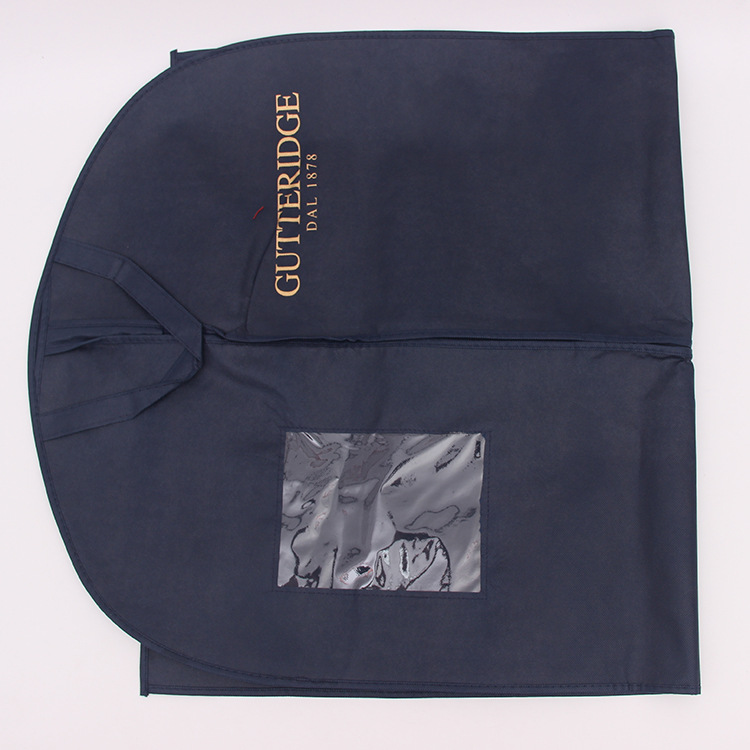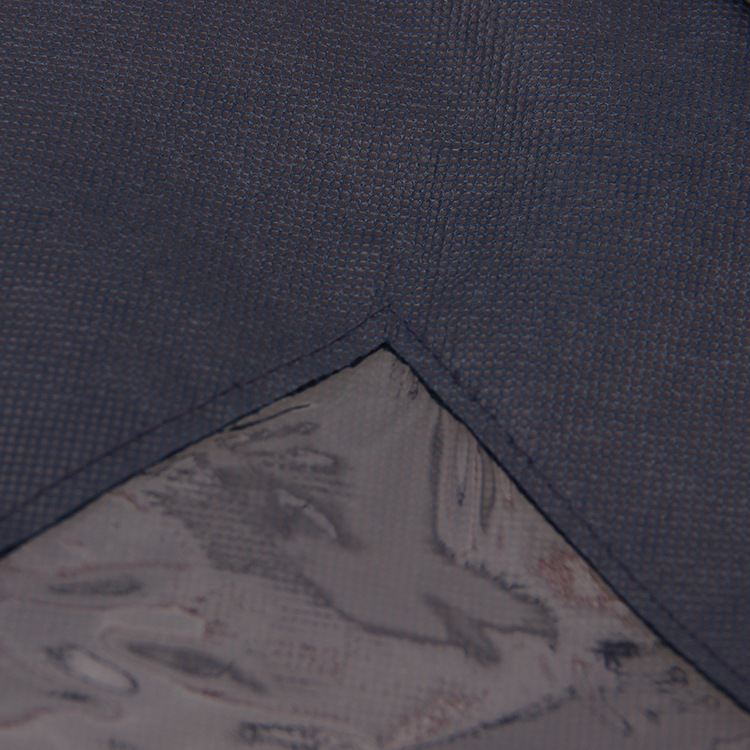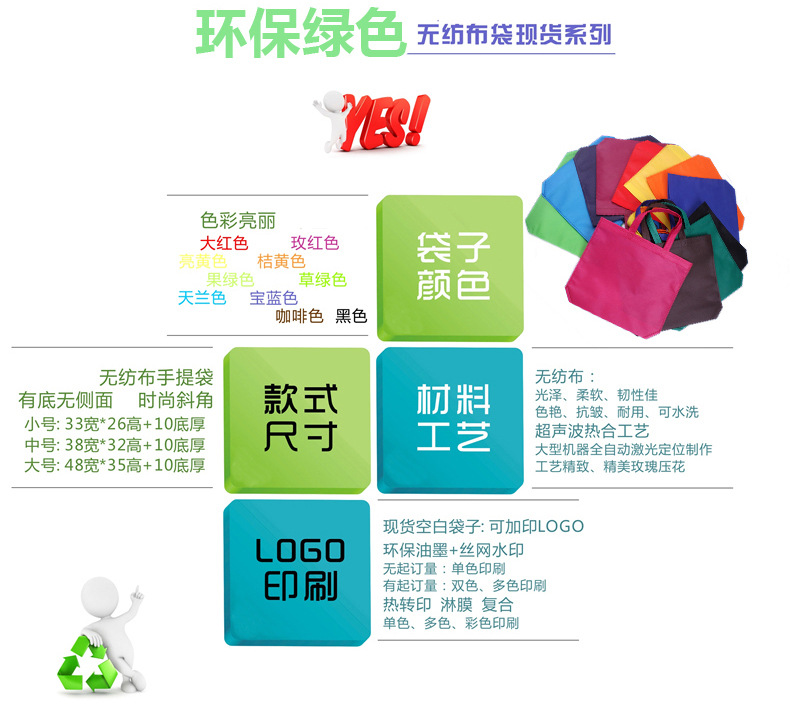
Search history
Clear allSearch by image
XDrag and drop an image here or upload an image
Max 5MB per image
UploadSign In | Join

Search history
Clear allSearch by image
XDrag and drop an image here or upload an image
Max 5MB per image
UploadSign In | Join
X Email Mobile
| 60 | CN¥ 4.6 | 686270 piece available |
|
A new item has been added to your Shopping Cart. You now have items in your Shopping Cart.




The main material of non-woven bags is non-woven fabric. Non-woven fabric is a type of non-woven cloth that is directly formed by various fiber-forming methods and solidification techniques using high-polymer slices, short fibers, or long fibers, resulting in a new type of fiber product with soft, breathable, and flat structure.
Nonwoven bags are a type of green product, durable, beautiful in shape, good in breathability, reusable, washable, and can be printed with advertising, labels, and have a long service life. They are suitable for any company or industry to use as advertising and promotional gifts. Consumers receive a beautiful nonwoven bag while shopping, and the merchants also benefit from invisible advertising, making it a win-win situation. This has made nonwoven bags increasingly popular in the market.
The product is made from nonwoven fabric, which is the next generation of environmental protection materials. It has the characteristics of moisture-proof, breathable, flexible, light weight, non-combustible, easy to decompose, non-toxic and non-irritating, rich colors, low price, and can be recycled and reused.
Production Process:
Water-jet nonwoven: The water-jet process involves spraying a high-pressure fine stream of water onto a layer or multiple layers of fiber web, causing the fibers to entangle with each other, thereby strengthening the web to achieve a certain level of strength.
Hot-bonded nonwoven: Hot-bonded nonwoven refers to a process where a fiber web is reinforced with a hot-melt adhesive, which is either fibrous or powder-like, and then the web is heated and melted to form a solidified fabric.
Airflow into a mesh: Airflow into a mesh nonwoven fabric can also be called as dust-free paper, dry paper-making nonwoven fabric. It is made by using airflow into a mesh technology to open the wood pulp fiberboard into a single fiber state, and then using airflow to make the fibers aggregate on the mesh curtain, and then the fiber mesh is further solidified into a cloth.
Wet-laid nonwoven: Wet-laid nonwoven fabric is made by opening the fiber raw material into single fibers in a water medium, simultaneously mixing different fiber raw materials, forming a fiber suspension slurry, transporting the suspension to the web-forming apparatus, and solidifying the fibers into a web under wet conditions.
Spunbond nonwoven: Spunbond nonwoven is formed by extending a polymer to form continuous filaments, then laying the filaments into a web, and then bonding, heating, chemically bonding, or mechanically reinforcing the web to convert it into a nonwoven fabric.
Spunbond Nonwoven: The process of spunbond nonwoven fabric: polymer feeding - melting and extruding - fiber formation - fiber cooling - web formation - reinforcing into a fabric.
Needle Punched Nonwoven: A type of dry nonwoven fabric produced by needle punching, which is a process that uses needles to pierce and reinforce a loose fiber web into a fabric.
Sewn-bonded nonwoven: Sewn-bonded nonwoven is a type of dry-laid nonwoven fabric. Sewn-bonding is a process of reinforcing a fiber web, yarn layer, or nonwoven material (such as plastic sheets, thin metal foils, etc.) or their composite with a warp-knitted fabric structure to create a nonwoven fabric.

Update time:
TOP